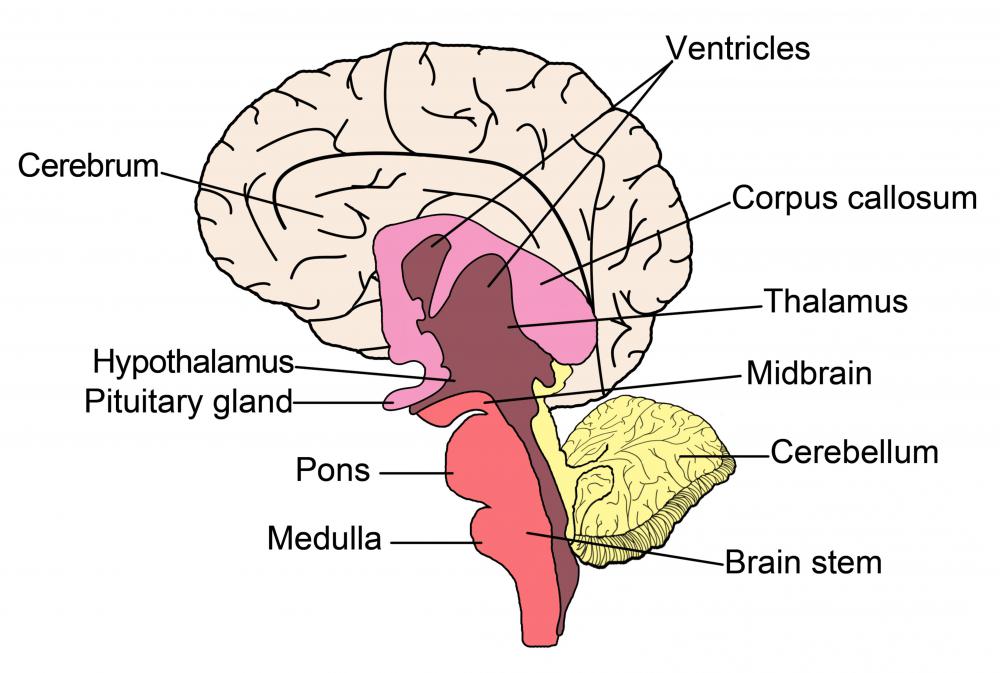At WiseGEEK, we're committed to delivering accurate, trustworthy information. Our expert-authored content is rigorously fact-checked and sourced from credible authorities. Discover how we uphold the highest standards in providing you with reliable knowledge.
What is the Telencephalon?
In neuroanatomy, the human brain is divided into the lower posterior fossa level and the upper supratentorial level by a relatively horizontal rigid membrane called tentorium cerebelli, or tentorium. The supratentorial contents can be divided into the posterior part called diencephalon, and the anterior part called telencephalon, or cerebrum. Furthermore, the telencephalon consists of the cerebral hemispheres, white matter under the cortices, and the basal ganglia. Knowledge of the parts of the telencephalon is important for neurologists and neurosurgeons because the manifestations of diseases differ according to what region is affected.
During embryological development, the entire nervous system develops from a simple tube called neural tube. Upon differentiation, the inner or core tube gives rise to parts of the central nervous system that perform primitive functions such as consciousness and respiration. On the other hand, the outer tube gives rise to parts that perform high-level functions such as movement and sensation. The most anterior part of the tube or the forebrain, called prosencephalon, differentiates into the telencephalon and the diencephalon during the 25th to 30th day of embryonic development. Later on, the telencephalon develops into the cerebral cortex, basal ganglia, and subcortical white matter.

The cerebral cortex is the most differentiated area of the telencephalon. Its innermost part is called the limbic cortex, the outermost part is called the neocortex, and the middle part is called the paralimbic cortex. The limbic cortex is involved in emotions, learning, memory, reproduction, and homeostasis, while the neocortex is involved in motivation, control of behavior, language, memory, movement, and sensation. When there is a problem in the limbic cortex, inability to lean, amnesia, and emotional disturbance may be experienced. If the problem is in the neocortex, a patient may experience inattention, seizures, inability to speak, memory problems, and sensory and motor disturbances.

Basal ganglia are a collective name for the areas of the telencephalon beneath the cerebral cortex. These collections of gray matter or unmyelinated axons are called caudate nucleus, globus pallidus, putamen, substantia nigra, and subthalamic nucleus. Between the caudate nucleus and the putamen is an intervening white matter structure called the internal capsule. When taken as a group, the caudate nucleus, putamen, and nucleus accumbens are called the striatum, because they have a striated appearance. The globus pallidus and putamen are collectively called the lenticular nucleus because they have a lens-like shape.
The subcortical white matter is made up of myelinated axons that connect the cerebral cortex with the rest of the brain. Structures that make up the subcortical white matter include the internal capsule, corona radiata, corpus callosum, and arcuate fibers. These structures function in the transmission of signals from one part of the brain to another. They are important in the integration of environmental stimuli and central nervous system responses.
AS FEATURED ON:
AS FEATURED ON:












Discuss this Article
Post your comments